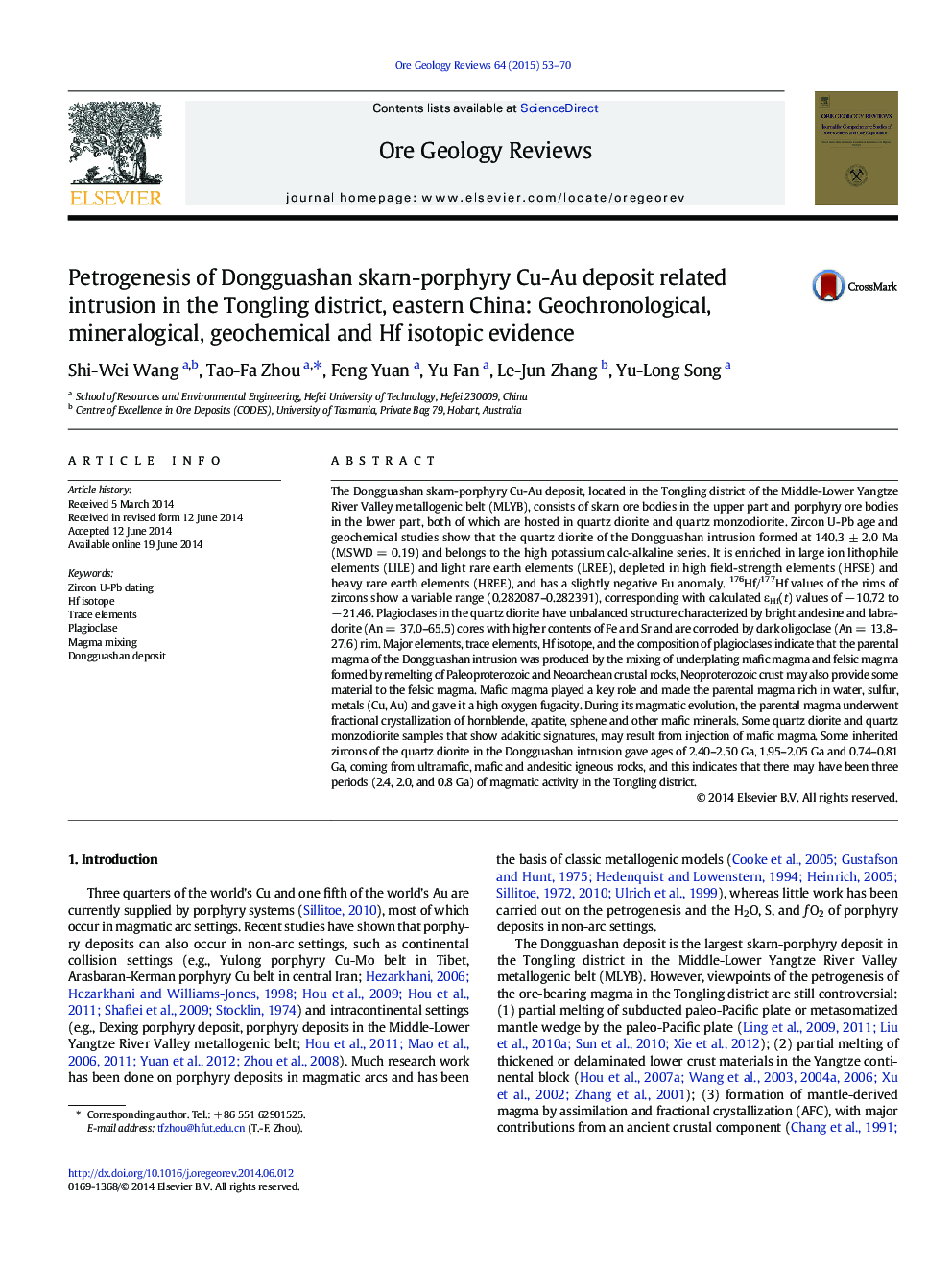| کد مقاله | کد نشریه | سال انتشار | مقاله انگلیسی | نسخه تمام متن |
|---|---|---|---|---|
| 4697095 | 1637239 | 2015 | 18 صفحه PDF | دانلود رایگان |

• The U-Pb dating show Dongguashan intrusion formed at 140.3 ± 2.0 Ma.
• The Geochemical and Hf Isotopic Evidence show the existance of magma mixing.
• Trace elements and Hf isotope show the source of the crust-derived magmas.
• The underplating mafic magma play a key role for the formation of the Dongguashan deposit.
The Dongguashan skarn-porphyry Cu-Au deposit, located in the Tongling district of the Middle-Lower Yangtze River Valley metallogenic belt (MLYB), consists of skarn ore bodies in the upper part and porphyry ore bodies in the lower part, both of which are hosted in quartz diorite and quartz monzodiorite. Zircon U-Pb age and geochemical studies show that the quartz diorite of the Dongguashan intrusion formed at 140.3 ± 2.0 Ma (MSWD = 0.19) and belongs to the high potassium calc-alkaline series. It is enriched in large ion lithophile elements (LILE) and light rare earth elements (LREE), depleted in high field-strength elements (HFSE) and heavy rare earth elements (HREE), and has a slightly negative Eu anomaly. 176Hf/177Hf values of the rims of zircons show a variable range (0.282087–0.282391), corresponding with calculated εHf(t) values of − 10.72 to − 21.46. Plagioclases in the quartz diorite have unbalanced structure characterized by bright andesine and labradorite (An = 37.0–65.5) cores with higher contents of Fe and Sr and are corroded by dark oligoclase (An = 13.8–27.6) rim. Major elements, trace elements, Hf isotope, and the composition of plagioclases indicate that the parental magma of the Dongguashan intrusion was produced by the mixing of underplating mafic magma and felsic magma formed by remelting of Paleoproterozoic and Neoarchean crustal rocks, Neoproterozoic crust may also provide some material to the felsic magma. Mafic magma played a key role and made the parental magma rich in water, sulfur, metals (Cu, Au) and gave it a high oxygen fugacity. During its magmatic evolution, the parental magma underwent fractional crystallization of hornblende, apatite, sphene and other mafic minerals. Some quartz diorite and quartz monzodiorite samples that show adakitic signatures, may result from injection of mafic magma. Some inherited zircons of the quartz diorite in the Dongguashan intrusion gave ages of 2.40–2.50 Ga, 1.95–2.05 Ga and 0.74–0.81 Ga, coming from ultramafic, mafic and andesitic igneous rocks, and this indicates that there may have been three periods (2.4, 2.0, and 0.8 Ga) of magmatic activity in the Tongling district.
Figure optionsDownload as PowerPoint slide
Journal: Ore Geology Reviews - Volume 64, January 2015, Pages 53–70